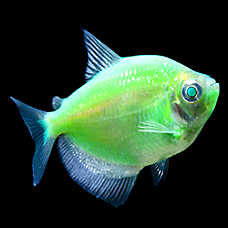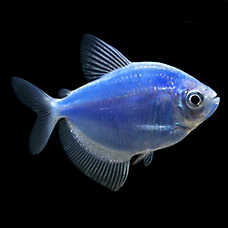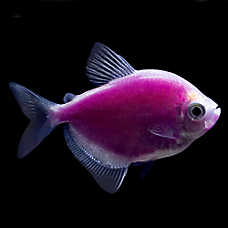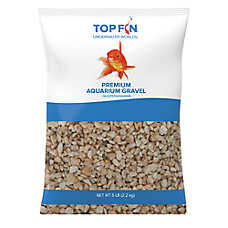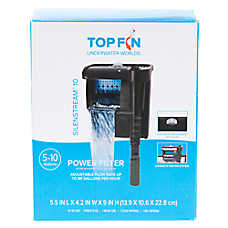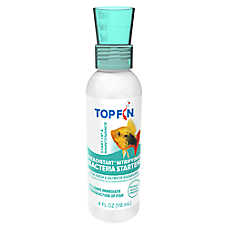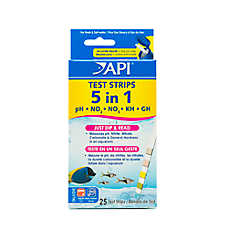Glofish Care Guide
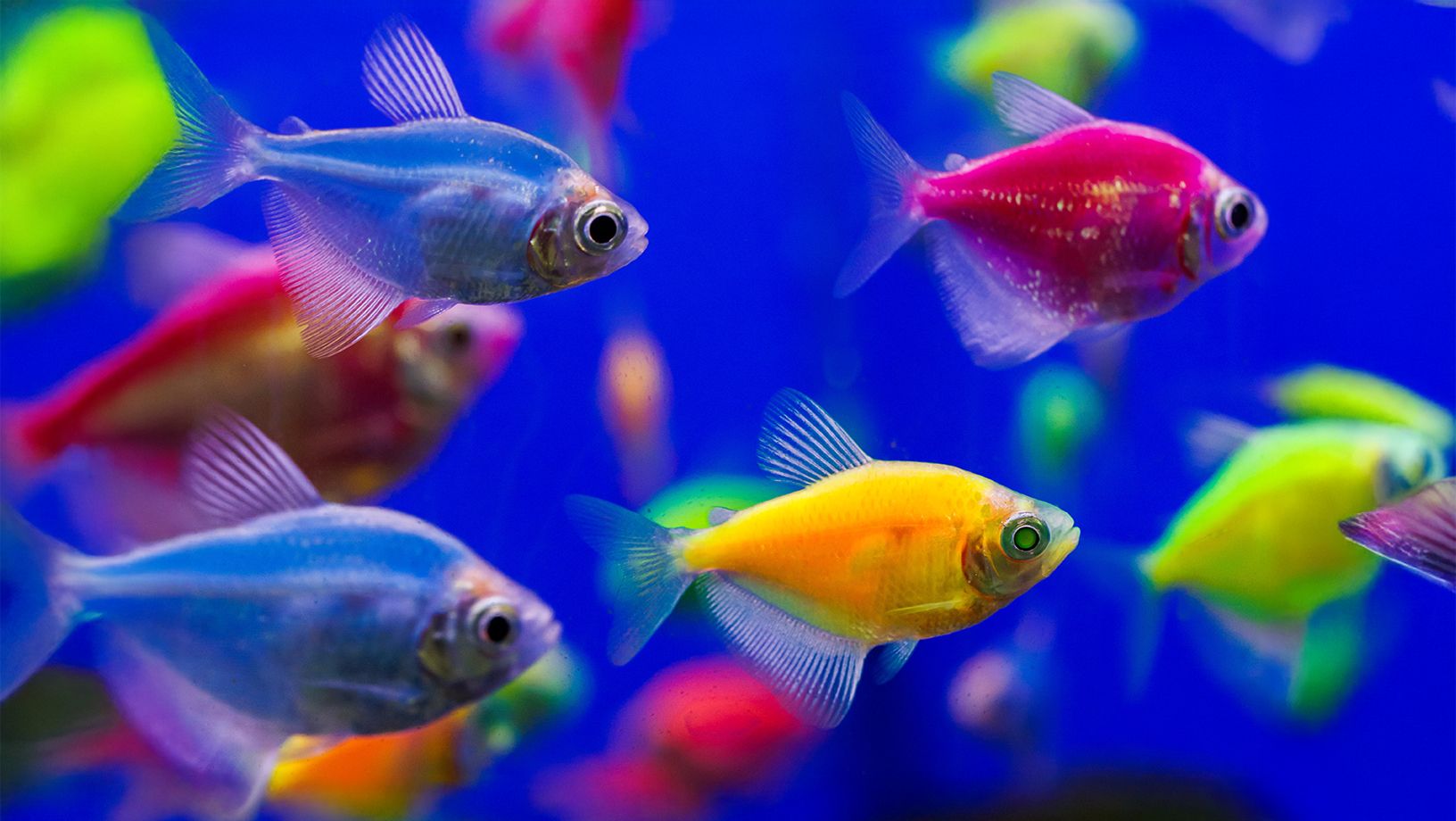
In this Article
Shining Stars in any Aquarium
As the name suggests, Glofish are vibrantly colored versions of other common aquarium fish. These bright hues are genetic - they're born glowing!
Because the term "Glofish" refers to their appearance rather than a species, they span different categories of fish behavior, including both peaceful Community Fish and more assertive Semi-Aggressive Fish.
Peaceful Community Glofish:
Danios, Pristella Tetras, Skirt Tetras, and Corydoras
Semi-Aggressive Glofish:
Freshwater Sharks, Tiger Barbs, and Angelfish
Behavior: When keeping fish as pets, there are no guarantees that the fish will get along. Although Community Fish are typically more peaceful than Semi-, you should always monitor your fish for signs of stress or aggression and be prepared to relocate the fish from the aquarium. It can also be helpful to rearrange or add decor to create additional territories and hiding places. Live plants help maintain water quality and provide hiding places for fish. Not sure which species get along? Our Fish Compatibility Guide can help you choose compatible tank mates.
Often, the more plants and décor, the more you see your fish! A tank with lots of variety in plants and décor is more interesting and less stressful for your fish, a bit like offering new toys or beds to your dog or cat!
Category information tables
Each Glofish species has different care needs. Below are key details for several common types:
Angelfish
SIZE: Up to 6" tall
EXAMPLES: Red or Green Glo Angelfish (Pterophyllum scalare)
TANK SIZE: 50+ gallon
WATER TEMP: 78-80°F (25-26°C)
HABITAT: Natural gravel and a few ornaments/rocks. Lots of live plants are preferred.
BEHAVIOR: Semi-Aggressive.
SCHOOLING: Angelfish do well individually or in groups of 2 to 4. Monitor groups for aggression.
COMMUNITY: Angelfish do well with most community fish and many semi-aggressive fish. They prefer a tall, heavily planted tank.
NATURAL DIET: Insects and crustaceans.
FOOD: High quality tropical fish flakes and frozen fish food occasionally
Barbs
SIZE: Up to 3"
EXAMPLES: Glo Tiger Barbs
TANK SIZE: 20+ gallon
WATER TEMP:: 78-80°F (25-26°C)
HABITAT: Natural gravel and a few ornaments/rocks. Lots of live plants are preferred.
BEHAVIOR: Semi-Aggressive
SCHOOLING: Yes, Barbs do well in groups of 5 or more. Monitor for signs of aggression.
COMMUNITY: Barbs can often coexist peacefully with many community fish but can be boisterous and may fin nip if stressed or lacking enrichment.
NATURAL DIET: Small insects and crustaceans.
FOOD: High quality tropical fish flakes and frozen fish food occasionally
Danio, Rasbora and Tetra
SIZE: Up to 3"
LIFESPAN: 2-3 years, potentially longer in ideal conditions
EXAMPLES: Glo Danios (Danio rerio), Glo Pristella Tetra (Pristella maxillaris), Glo Skirt Tetras (Gymnocorymbus ternetzi)
TANK SIZE: 10+ gallon
WATER TEMP: 78-82°F (25-27°C)
HABITAT: Natural gravel and decor. Lots of live plants are preferred.
BEHAVIOR: Peaceful
SCHOOLING: Yes, these fish are best kept in groups of at least 5 or more of the same species.
COMMUNITY: This group looks stunning in a heavily planted tank and can cohabitate with other peaceful fish and often with some semi-aggressive fish.
NATURAL DIET Small insects, crustaceans & algae.
FOOD: High quality tropical fish flakes and frozen fish food occasionally
Freshwater Sharks
SIZE: Up to 6"
EXAMPLES: Glo Rainbow Sharks (Epalzeorhynchos frenatum)
TANK SIZE: 50+ gallon
WATER TEMP: 78-80°F (25-26°C)
HABITAT: Natural gravel and a few ornaments/rocks.
BEHAVIOR: Semi-Aggressive
SCHOOLING: Freshwater sharks do best kept individually as they can be highly territorial.
COMMUNITY: Rainbow Sharks are boisterous and territorial, doing best with large semi-aggressive fish. Avoid similar looking fish such as loaches, botias, and Chinese Algae Eaters.
NATURAL DIET: Small insects and crustaceans.
FOOD: High quality tropical fish flakes and frozen fish food occasionally
Small Schooling Catfish
SIZE: Up to 3"
LIFESPAN: 3-5 years, potentially longer in ideal conditions
EXAMPLES: Glo Cory Catfish (Corydoras aeneus)
TANK SIZE: 20+ gallon
WATER TEMP: 78-82°F (25-27°C)
HABITAT: Natural sand substrate and decor. Lots of live plants are preferred.
BEHAVIOR: Peaceful
SCHOOLING: Yes, small schooling catfish are best kept in groups of at least 5 or more of the same species.
COMMUNITY: Small schooling catfish will do well in planted community tanks with other peaceful fish. Various types of corydoras will often school together.
NATURAL DIET Omnivorous scavenger.
FOOD: High quality sinking pellets and frozen fish food occasionally
Typical Community Fish or Semi-Aggressive Fish Aquarium:
- Glass or acrylic tank
- Hood or tank cover with light
- Thermometer
- Gravel or sand
- Décor for hiding and enrichment
- Live or artificial plants
- Heater
- Filter
When should I test my water quality?
- Fish are sluggish, near the bottom of the tank
- Fish are at the top, breaking the water to breathe
- Fish are not eating
- Sudden behavior changes in your fish
- Water is cloudy
- Water smells funny
PetSmart offers free water quality testing and one of our knowledgeable associates can help you get your system balanced.
When should I contact a veterinarian?
Contact an aquatic veterinarian if you notice the following signs:
- Unusual swimming pattern
- Thinness or decreased appetite
- Abdominal swelling
- Inflamed or discolored skin/fins
- Fins clamped to sides of body
- Scraping body on rocks (flashing)
- Visible signs of illness or recent fish loss
If you observe any of these symptoms, we recommend visiting the "Find a Fish Vet" tool at fishvets.org or wavma.org to locate a qualified aquatic veterinarian in your area.
Ready to learn more?
This guide is a great starting place, but we encourage you to do more research on the individual species that you are keeping so that you can be as successful as possible with your aquarium!
Related guides:
Vet Assured™: Pets purchased at PetSmart are part of our exclusive Vet Assured™ program, designed by PetSmart veterinarians to help improve the health and well-being of our pets. Our vendors meet a high standard in caring for pets and screening them for common illnesses. This program also includes specific standards for in-store pet care.
The PetSmart Promise: If your pet becomes ill during the initial 14-day period, or if you’re not satisfied for any reason, PetSmart will gladly replace the pet or refund the purchase price.
Safety tips for you and your pet:
1. ALL ANIMALS can potentially carry viral, bacterial, fungal, and parasitic diseases contagious to humans. 2. Thoroughly wash your hands with warm, soapy water before and after contact with any pet or its habitat. 3. Adults should assist children with hand washing after contact with a pet, its habitat or aquarium water. 4. Always add a dechlorinator or water conditioner and bacteria starter to tap water before adding it to the aquarium. 5. Do not use soaps or detergents to clean aquarium or decor, since they are toxic to fish. For more information, visit petsmart.com, cdc.gov/healthypets, or contact your veterinarian.
This care guide contains general information for the proper care of your pet, but is not comprehensive and is not a substitute for veterinary advice or care. PETSMART and VET ASSURED are trademarks of PetSmart Home Office, Inc. © 2025 PetSmart. All rights reserved.
The PetSmart Promise: If your pet becomes ill during the initial 14-day period, or if you’re not satisfied for any reason, PetSmart will gladly replace the pet or refund the purchase price.
Safety tips for you and your pet:
1. ALL ANIMALS can potentially carry viral, bacterial, fungal, and parasitic diseases contagious to humans. 2. Thoroughly wash your hands with warm, soapy water before and after contact with any pet or its habitat. 3. Adults should assist children with hand washing after contact with a pet, its habitat or aquarium water. 4. Always add a dechlorinator or water conditioner and bacteria starter to tap water before adding it to the aquarium. 5. Do not use soaps or detergents to clean aquarium or decor, since they are toxic to fish. For more information, visit petsmart.com, cdc.gov/healthypets, or contact your veterinarian.
This care guide contains general information for the proper care of your pet, but is not comprehensive and is not a substitute for veterinary advice or care. PETSMART and VET ASSURED are trademarks of PetSmart Home Office, Inc. © 2025 PetSmart. All rights reserved.
